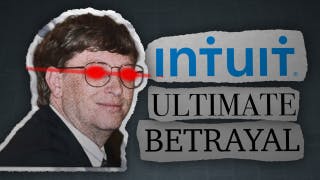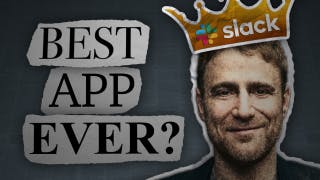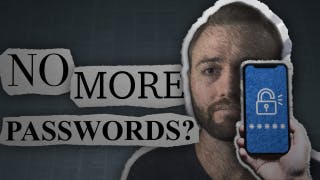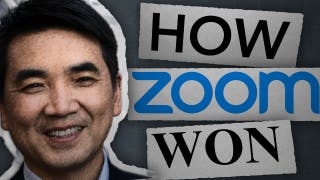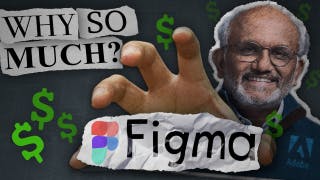
Is the writing on the wall for DocuSign?
When was the last time you signed a document? I mean like actually signed something with a pen and paper. Unless you’re signing autographs or you have an affinity for paper checks, there’s a good chance that it’s been a while.
With the advent of e-signature technology, signing and authenticating a document has now become incredibly easy, more convenient, and safer from forgery. From employee onboarding and insurance claims to customer forms and non-disclosure agreements, the use cases for document authorization are many and varied.
Over the past couple of years, the e-signature market has grown by leaps and bounds. By 2027, the global e-signature market as a whole is expected to reach $20.4 billion.
One company in particular seems to have made quite the impression. An OG of the market: DocuSign. It’s growth exploded in 2020 and posted subscription revenue of $410 million. With the shift to remote work, it’s no wonder the brand has seen so much success. But after reaching a share price of $310 in September of 2021, DocuSign’s stock started to tumble — hard. It got so bad that after losing more than 60% of its value to $60, CEO Dan Springer resigned in June of 2022.
But first, if you like this kind of content and want to learn more, subscribe to get in the know when we release new episodes.

Lessons from the Top
So how did DocuSign get to such a high peak in the first place? What were the causes of its downfall? What SaaS lessons can you take from these successes and failures? We’ll get into all of that. I’m Ben Hillman, and this is Verticals.
It’s difficult to imagine printing and manually signing every piece of paper that requires our signature these days. And though we may not always think of the huge impact it’s had on all of us — not just businesses — the e-signature has definitely made our lives easier.
DocuSign pioneered this now multi-billion dollar market. And it does continue to lead, it’s not as impressive a lead as it was. The lesson: You must plan and prepare as much as possible for what comes after those unprecedented or uncertain times. Pandemics end, wars end, inflation slows, recessions end, etc. Things are ever-changing, especially in business.
- Your happy customers are your best sellers In its early days, DocuSign used referral marketing (aka word-of-mouth marketing) in order to grow its customer base — and it worked. Today, it’s just as powerful, if not more, because of the many communication channels that exist. In fact, according to a Nielsen report, 92% of consumers trust the referral of friends and family over corporate advertising. And another 88% trust online reviews written by other consumers as much as recommendations from personal contacts.So, keep your customers happy by delivering exceptional service. Nothing speaks more highly of your product or service than a customer recommending it.
- Focus, focus, focus When it comes to building a company, it's best to focus on the things that will create even more opportunity. Many companies make the mistake of trying to be everything for everybody — but that will never be the case. That’s not to say you can’t expand in the future, but initially it's probably best to place your efforts toward one thing at a time — one project, one industry, one audience, etc.DocuSign’s focus within the real estate industry is what helped accelerate its growth and eventually led to many other opportunities.
- Don't lose sight of the future.While DocuSign, like many others, was able to capitalize on the pandemic because of the shift to online transactions, it seems it was unprepared for what came after. As businesses began to reopen, people went back to the office, and more and more face-to-face interactions started taking place, usage declined and so did those crazy high numbers.
Forecasting and planning around the unknown is part of business, but it’s even more crucial during extraordinary and unprecedented times. “There is nothing more constant than change.” - Heraclitus
Background
An electronic signature, or e-signature in short, is defined as symbols or other data in digital form attached to an electronically transmitted document as verification of the sender’s intent to sign the document. An e-signature can take several forms: a person's name typed out, an uploaded image of the individual's signature in cursive, or a signature drawn on the screen of a tablet or a smartphone.
Signatures have long been the only way to authenticate an individual's identity, but in the 1800s, the evolution of signatures took an interesting twist. On May 24th, 1844 a man crafted a message in the Senate wing of the US Capitol. The message said, “What Hath God Wrought.” Moments later an identical message appeared in Baltimore, Maryland. Was this the first text message? Hardly. Those in attendance had just witnessed the first telegram. The man who sent this message was Samuel Morse.
Over the next few decades, Morse code was used to communicate across great distances. In some instances, it was even used to sign contracts and authenticate documents. Then in 1869, a landmark ruling by the New Hampshire Supreme Court confirmed such contracts as enforceable: "It makes no difference whether the operator writes with a steel pen an inch long attached to an ordinary penholder, or whether his pen be a copper wire a thousand miles long. Nor does it make any difference that in one case common ink is used, while in another case a more subtle fluid, known as electricity, performs the same office." This was, in many ways, the earliest validation of electronic signatures. However, it would take more than a 100 years for the idea of e-signatures to truly pick up pace more broadly within society.

In the 1980s, signed documents sent by fax were considered valid and enforceable, so much so that government entities and courts started to recognize and use them. In 2000, the U.S. government gave the adoption of e-signatures yet another boost with the ESIGN Act. Under this Act, electronic signatures were given legal equivalence to handwritten ones. In other words, the law nowadays fully recognizes electronic signatures and records as long as all parties to a contract choose to use electronic documents and to sign them electronically. Businesses definitely took note… and just around the corner lurked what would soon be a major player.
Early Leaders
In the year 2000, Seattle-based entrepreneur Tom Gonser was working at NetUpdate, a company he founded in 1998. NetUpdate had acquired a few companies, particularly a firm called DocuTouch. DocuTouch held several patents on e-signatures and even had a plug-in for MS Word2000. This gave Gonser an idea. He left NetUpdate in 2003 to focus on a new company with assets that were purchased from DocuTouch by cofounder Court Lorenzini. Along with Eric Ranft, the trio would go on to found their new company: DocuSign.
Over the next couple of decades, DocuSign paved the way for the e-signature space. An early deal in 2005 with zipLogix resulted in a massive customer base within the real estate space. In 2010, it added support for iPhone and iPad authentication. Additionally, it partnered with Box.com, which meant that DocuSign would now play a prominent part throughout the entire collaboration process. In July of 2012, DocuSign boasted that approximately 90% of Fortune 500 companies had signed up.
These key moves meant that DocuSign was now a stalwart of the e-signature space. In 2018, with a single IPO share going for $29, DocuSign was able to enjoy mind-blowing profits by putting all of its 21,700,000 shares up for sale, which ultimately raked in $629.3 million. More recently, DocuSign has invested in internal R&D, 24/7 document monitoring, and building tools like an SMS alert system. It seems like DocuSign has always been destined for greatness, but if DocuSign were to ever fall, which company would be primed to pounce on its lucrative market?
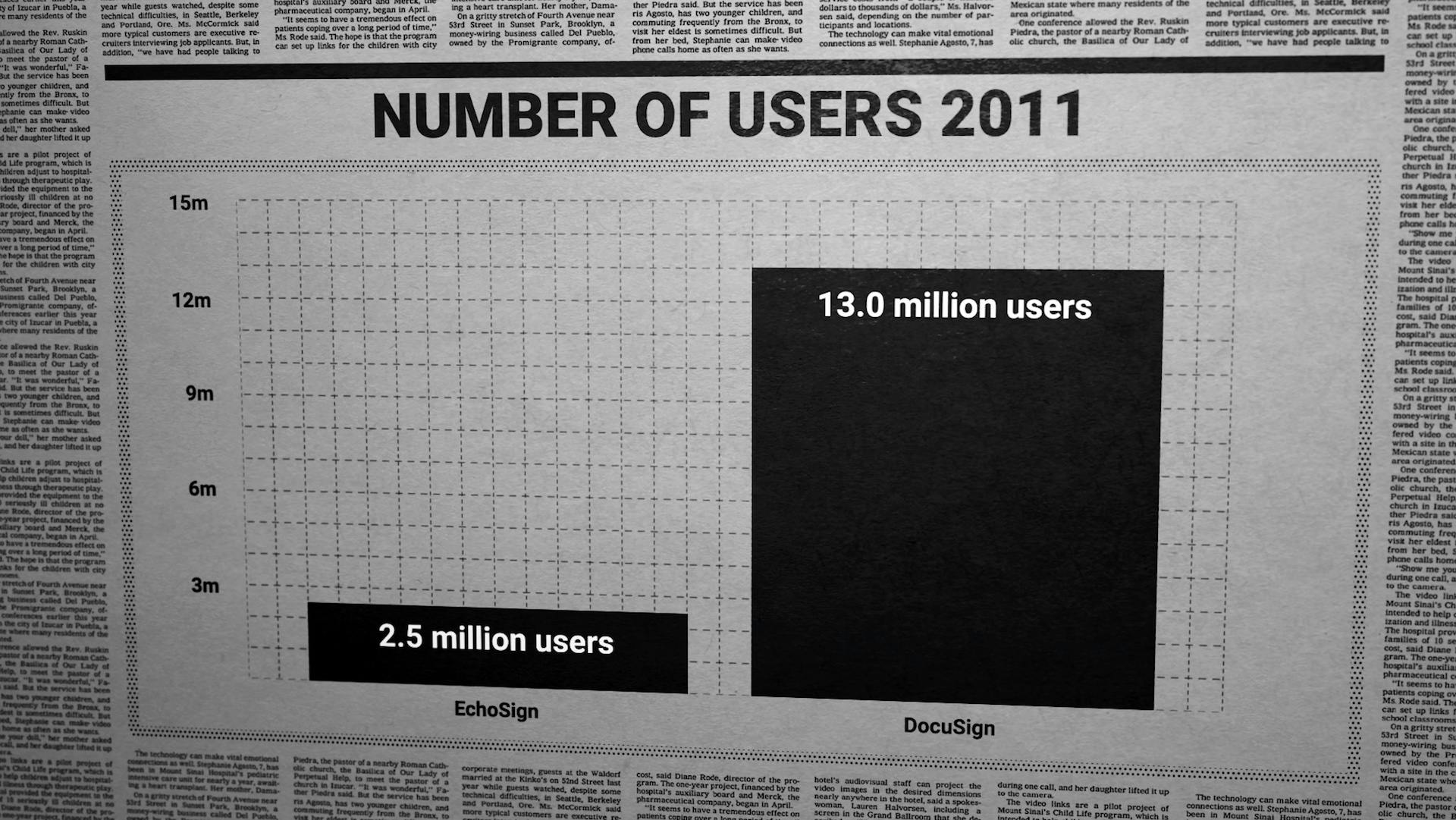
EchoSign started operations in late 2005. EchoSign, like DocuSign before it, benefited from streamlining legacy processes and reducing clutter. It even began with a freemium plan for folks who needed to manage 20 documents or less. This tactic helped boost EchoSign to more than 2.5 million users by 2011. Not too shabby. That is, until you look at DocuSign’s over 13 million users as a comparison. EchoSign needed a prayer if they wanted to compete.
In July 2011, they got just that. EchoSign was acquired by Adobe, a move that saw its name conveniently changed to Adobe EchoSign and offerings expanded to include support for mobile devices. The company later changed its name to Adobe Sign, which has stuck to this day. As we speak, Adobe Sign is a full-fledged e-signatures and digital signing software. With Adobe’s large technical war chest at EchoSign’s disposal, DocuSign needed to adapt quickly to stay competitive. So what were some of the steps that ultimately led to DocuSign’s success?
Reasons for success
There are a multitude of reasons DocuSign succeeded, the first of which started early on in the company’s existence. The tactic it used was referral marketing. As far back as 2009, DocuSign had a referral program whereby it would send a $20 visa gift card to customers who managed to get another person to subscribe to DocuSign. Reportedly, 1300 referrals poured in. While that may seem like a lot to pay in Visa gift cards, consider this: at the time, the professional plan cost $15. If each of those customers stuck around for at least two months, DocuSign is more than breaking even. And considering how folks rave about DocuSign, I’m sure their average LTV is healthy enough to withstand it.
More recently, in 2016, Amy Wong, Director of Web Acquisition at DocuSign, said that for every referral it gets back, on average, 1.5 customers. But perhaps more importantly, she stresses that it’s not really about getting a high quantity of leads. Instead, it’s more about the high quality of leads that end up converting. Folks who end up referring others are typically those who love the product in the first place. And who better to sell your product than happy customers?
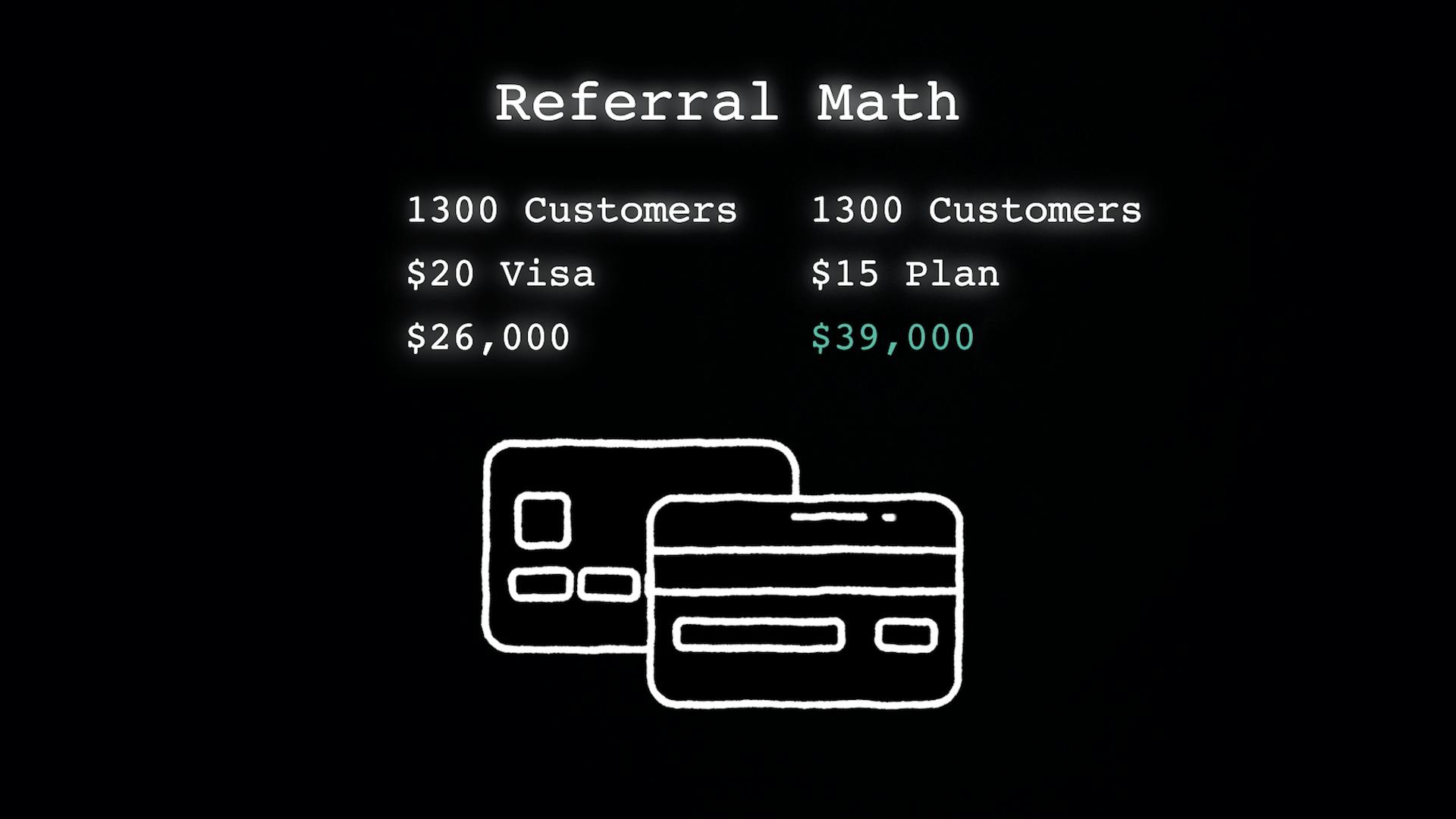
Another area where DocuSign succeeded was focusing on a single industry in which to make its mark. That industry was real estate with DocuSign’s partnership with zipForm (now zipLogix).
In real estate, there are several paper forms required, including loan applications, property inquiry forms, and house seller forms. DocuSign was a perfect fit for this need. To make things better, in 2010, the National Association of Realtors released DocuSign Realtor Edition. It was an exclusive offering dedicated entirely to real estate agents. At the time, the NAR represented 1.2 million members across residential and commercial real estate industries. This was a massive client base from which DocuSign was able to grow.
So, with all of these building blocks toward success, why did DocuSign lose 60% of its value as well as its CEO, Dan Springer? In 2020, the SaaS company saw improved growth as demand for e-signatures grew. Costly paper stock and needing to shift towards a remote working environment drew companies to search for virtual solutions. DocuSign benefited.
While it was beneficial in the short term, DocuSign’s growth could not be exponential forever. As businesses opened back up and workers moved back to the office, platform consumption declined, especially as renewals came up. DocuSign isn’t underwater by any means. In fact, it has been growing — just not as much as has been projected. It will recover, but it's still better to watch out. There’s blood in the water and the sharks are out to play.
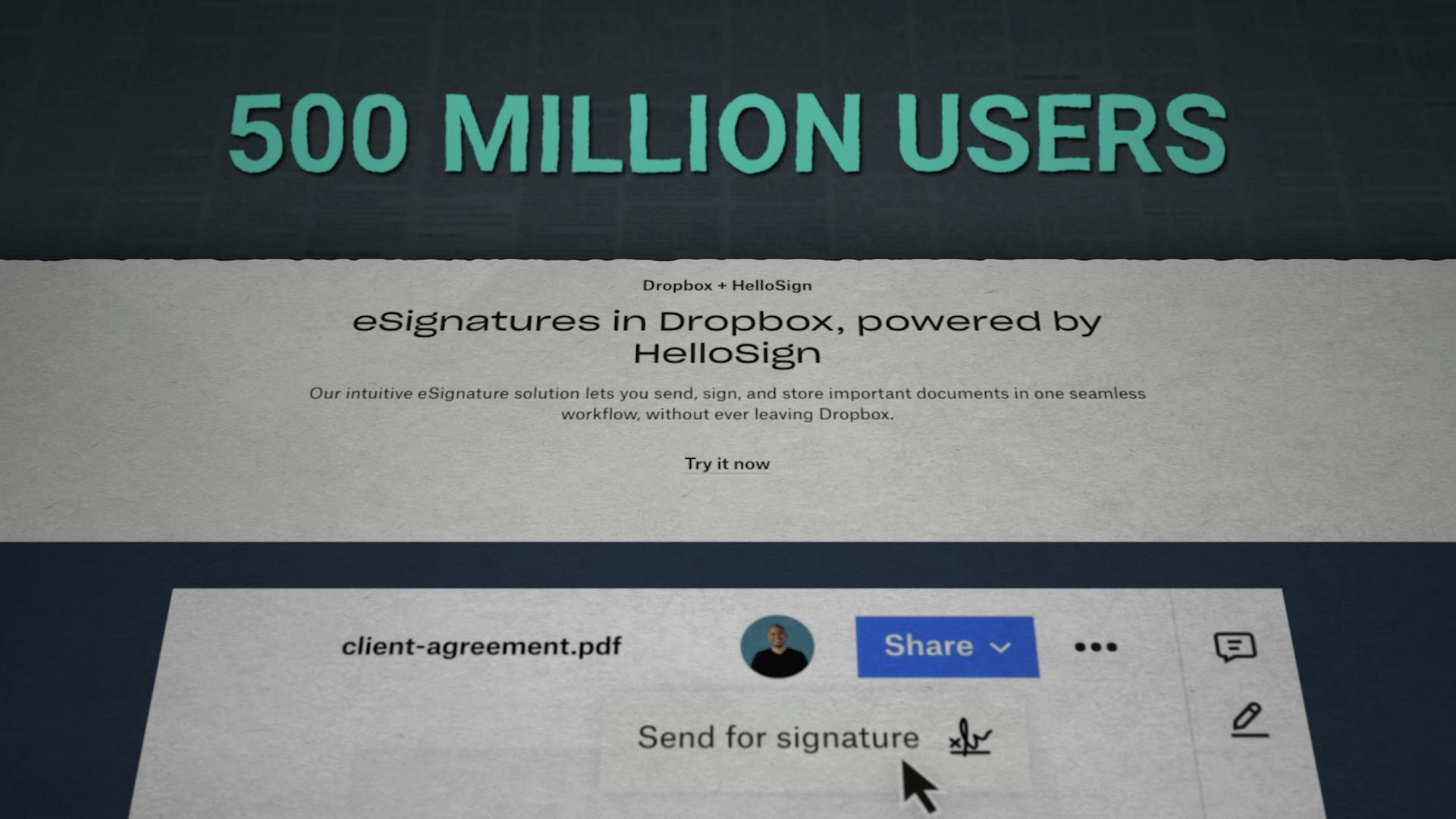
Just recently, Dropbox and HelloSign partnered up. Dropbox, an innovator in its own space, boasts over 500 million users. While adoption of the product isn’t guaranteed to be automatic, it puts HelloSign in a great position to acquire new users. By combining their powers, HelloSign and Dropbox have powerful ammunition in the e-signature war.
Adobe, as mentioned before, is a behemoth in its own right. Not too long ago, Adobe announced that government agencies in all 50 states would start using its products. And in March 2021, the company rolled out a new suite of tools dedicated to small businesses. Put together, these strategic moves depict Adobe's commitment to get to the top of the e-signature market by all means possible.
Can DocuSign remain afloat in such trying times? Well, it's possible, but there needs to be concise, well-calculated steps made along the way.
Summary
One thing stands out above all else: e-signatures are incredibly important to folks running SaaS businesses. Not only does this technology save time, but it also saves on paper costs and provides top-notch security. In many ways, it takes business to a whole new level of efficiency and flexibility, a feat that only a pinch of technologies today can achieve.
Putting all the aforementioned struggles aside, DocuSign is still in a good position and it's still very much the king of the e-signature world. SaaS business owners can learn a thing or two from DocuSign's meteoric rise to stardom and, if possible, replicate similar industry-winning strategies within their own entities, however daunting that may seem.
The e-signature industry isn't without its fair share of challenges. Issues of document security and verification, legality, and trust continue to cause headaches among key industry players. Now more than ever, companies in the e-signature space need to stay true to customer-centric practices or risk a Biblical customer exodus sometime in the future.
It's quite clear that the e-signature race is more open than it has ever been in the past. More and more companies in the e-signature realm are doing everything possible to get closer to the customer, meaning this race is really anyone's to win. Who will be first to the finish line?
If you like this kind of content and want to learn more, subscribe to get in the know when we release new episodes.

1
00:00:00,180 --> 00:00:01,980
- Obtain the purchaser's signature.
2
00:00:01,980 --> 00:00:02,813
- DocuSign.
3
00:00:02,813 --> 00:00:03,780
- 41% drop.
4
00:00:03,780 --> 00:00:05,430
- Why so large signature, my friend?
5
00:00:05,430 --> 00:00:06,270
- When was the last time
6
00:00:06,270 --> 00:00:08,070
that you signed a document?
7
00:00:08,070 --> 00:00:10,050
I mean, like actually signed something
8
00:00:10,050 --> 00:00:11,253
with a pen and paper.
9
00:00:12,090 --> 00:00:13,620
Well, unless you're signing autographs
10
00:00:13,620 --> 00:00:15,660
or I don't know, maybe
you have an affinity
11
00:00:15,660 --> 00:00:16,920
for paper checks,
12
00:00:16,920 --> 00:00:19,110
there's a good chance
that it's been a while.
13
00:00:19,110 --> 00:00:21,240
With the advent of e-signature technology,
14
00:00:21,240 --> 00:00:22,920
signing and authenticating a document
15
00:00:22,920 --> 00:00:25,320
has now become incredibly easy.
16
00:00:25,320 --> 00:00:27,630
From employee onboarding
and insurance claims
17
00:00:27,630 --> 00:00:30,030
to customer forms and
non-disclosure agreements,
18
00:00:30,030 --> 00:00:31,830
the use cases for document authorization
19
00:00:31,830 --> 00:00:33,510
are many and varied.
20
00:00:33,510 --> 00:00:34,560
Over the past couple of years,
21
00:00:34,560 --> 00:00:37,440
the e-signature market has
grown by leaps and bounds.
22
00:00:37,440 --> 00:00:40,170
By 2027, the global
e-signature market as a whole,
23
00:00:40,170 --> 00:00:43,290
is expected to reach $20.4 billion.
24
00:00:43,290 --> 00:00:44,850
But one company in particular seems
25
00:00:44,850 --> 00:00:46,550
to have made quite the impression.
26
00:00:47,650 --> 00:00:48,483
DocuSign.
27
00:00:48,483 --> 00:00:50,640
DocuSign's growth exploded in 2020
28
00:00:50,640 --> 00:00:53,940
and posted subscription
revenue of $410 million.
29
00:00:53,940 --> 00:00:55,140
And with the shift of remote work,
30
00:00:55,140 --> 00:00:56,280
it's no wonder that the brand
31
00:00:56,280 --> 00:00:57,870
has seen so much success.
32
00:00:57,870 --> 00:01:00,270
But after reaching a share price of $310
33
00:01:00,270 --> 00:01:02,070
in September of 2021,
34
00:01:02,070 --> 00:01:03,240
it's stock plummeted
35
00:01:03,240 --> 00:01:05,760
to $60 in June of this year,
36
00:01:05,760 --> 00:01:08,130
causing CEO Dan Springer to resign.
37
00:01:08,130 --> 00:01:10,020
So, how did DocuSign
get to such a high peak
38
00:01:10,020 --> 00:01:11,250
in the first place?
39
00:01:11,250 --> 00:01:13,050
What were the causes of its downfall?
40
00:01:13,050 --> 00:01:14,700
What SaaS lessons can you take
41
00:01:14,700 --> 00:01:15,960
from these successes
42
00:01:15,960 --> 00:01:17,460
and these failures?
43
00:01:17,460 --> 00:01:18,810
We'll get into all of that soon.
44
00:01:18,810 --> 00:01:21,300
But first, let's get some background info.
45
00:01:21,300 --> 00:01:22,320
I'm Ben Hillman,
46
00:01:22,320 --> 00:01:24,220
and this is Verticals.
47
00:01:24,220 --> 00:01:27,120
(quirky music)
(pen squeaking)
48
00:01:27,120 --> 00:01:28,230
An electronic signature,
49
00:01:28,230 --> 00:01:29,910
or e-signature for short,
50
00:01:29,910 --> 00:01:31,080
is defined as symbols
51
00:01:31,080 --> 00:01:32,700
or other data in digital form
52
00:01:32,700 --> 00:01:35,700
attached to an electronically
transmitted document.
53
00:01:35,700 --> 00:01:38,100
Basically, an e-signature
can take several forms.
54
00:01:38,100 --> 00:01:39,390
A person's name typed out,
55
00:01:39,390 --> 00:01:42,540
an uploaded image of the
individual signature in cursive,
56
00:01:42,540 --> 00:01:44,220
or a signature drawn on the screen
57
00:01:44,220 --> 00:01:46,020
of a tablet or a smartphone.
58
00:01:46,020 --> 00:01:49,110
Long ago, signatures came
in the form of stamps
59
00:01:49,110 --> 00:01:50,520
or other different symbols.
60
00:01:50,520 --> 00:01:53,118
It was more of like a seal on a contract.
61
00:01:53,118 --> 00:01:54,930
Sometimes, quite literally.
62
00:01:54,930 --> 00:01:55,980
But in the 1800s,
63
00:01:55,980 --> 00:01:58,890
the evolution of signatures
took an interesting twist.
64
00:01:58,890 --> 00:02:00,660
On May 24th, 1844,
65
00:02:00,660 --> 00:02:01,890
a man crafted a message
66
00:02:01,890 --> 00:02:03,990
in the Senate Wing of the U.S. Capitol.
67
00:02:03,990 --> 00:02:07,050
The message said, "What hath God wrought?"
68
00:02:07,050 --> 00:02:09,030
Moments later, an
identical message appeared
69
00:02:09,030 --> 00:02:10,740
in Baltimore, Maryland.
70
00:02:10,740 --> 00:02:13,020
Was this the first text message?
71
00:02:13,020 --> 00:02:14,100
Not exactly.
72
00:02:14,100 --> 00:02:16,890
Those in attendance had just
witnessed the first telegram.
73
00:02:16,890 --> 00:02:19,530
The man who sent this
message was Samuel Morse.
74
00:02:19,530 --> 00:02:20,610
Over the next few decades,
75
00:02:20,610 --> 00:02:23,760
Morse code was used to communicate
across great distances.
76
00:02:23,760 --> 00:02:25,500
In some instances, it was even used
77
00:02:25,500 --> 00:02:27,540
to sign and authenticate documents.
78
00:02:27,540 --> 00:02:29,640
Then in 1869, a landmark ruling
79
00:02:29,640 --> 00:02:31,200
by the New Hampshire Supreme Court
80
00:02:31,200 --> 00:02:33,720
confirmed such contracts as enforceable.
81
00:02:33,720 --> 00:02:35,940
This was, in many ways,
the earliest validation
82
00:02:35,940 --> 00:02:37,560
of electronic signatures.
83
00:02:37,560 --> 00:02:40,200
However, it would take more than 100 years
84
00:02:40,200 --> 00:02:41,730
for the idea of e-signatures
85
00:02:41,730 --> 00:02:44,700
to truly pick up pace more
broadly within society.
86
00:02:44,700 --> 00:02:46,980
In the 1980s, signed documents sent by fax
87
00:02:46,980 --> 00:02:48,810
were considered valid and enforceable,
88
00:02:48,810 --> 00:02:50,970
so much so that government
entities and courts
89
00:02:50,970 --> 00:02:52,770
started to recognize and use them.
90
00:02:52,770 --> 00:02:55,080
In 2000, the U.S.
government gave the adoption
91
00:02:55,080 --> 00:02:58,680
of e-signatures a massive
boost, the E-Sign Act.
92
00:02:58,680 --> 00:02:59,513
Under this act,
93
00:02:59,513 --> 00:03:01,920
electronic signatures were
given legal equivalents
94
00:03:01,920 --> 00:03:03,300
to handwritten ones.
95
00:03:03,300 --> 00:03:04,890
Businesses definitely took note.
96
00:03:04,890 --> 00:03:06,420
And just around the corner,
97
00:03:06,420 --> 00:03:08,914
lurked what would soon be a major point.
98
00:03:08,914 --> 00:03:09,747
(dramatic music)
99
00:03:09,747 --> 00:03:10,890
Over the next couple of decades,
100
00:03:10,890 --> 00:03:13,530
DocuSign paved the way
for the e-signature space.
101
00:03:13,530 --> 00:03:15,900
An early deal in 2005, with zipLogix,
102
00:03:15,900 --> 00:03:17,790
resulted in a massive customer base
103
00:03:17,790 --> 00:03:19,470
within the real estate space.
104
00:03:19,470 --> 00:03:21,030
In 2010, it added support
105
00:03:21,030 --> 00:03:23,280
for iPhone and iPad authentication.
106
00:03:23,280 --> 00:03:25,470
Additionally, it partnered with Box.com,
107
00:03:25,470 --> 00:03:28,620
which meant DocuSign would
now play a prominent part
108
00:03:28,620 --> 00:03:30,779
throughout the entire
collaboration process.
109
00:03:30,779 --> 00:03:31,612
- All right.
110
00:03:31,612 --> 00:03:32,445
- In July of 2012,
111
00:03:32,445 --> 00:03:34,440
DocuSign boasted that approximately 90%
112
00:03:34,440 --> 00:03:36,720
of Fortune 500 companies had signed up.
113
00:03:36,720 --> 00:03:37,650
These key moves meant
114
00:03:37,650 --> 00:03:39,360
that DocuSign was now a stalwart
115
00:03:39,360 --> 00:03:40,590
of the e-signature space.
116
00:03:40,590 --> 00:03:42,780
In 2018, DocuSign IPOd
117
00:03:42,780 --> 00:03:45,840
with a single share going for $29.
118
00:03:45,840 --> 00:03:49,590
And they put all 21
million shares up for sale,
119
00:03:49,590 --> 00:03:53,760
which ultimately raked in $629.3 million.
120
00:03:53,760 --> 00:03:54,750
It seemed like DocuSign
121
00:03:54,750 --> 00:03:57,060
has always been destined for greatness.
122
00:03:57,060 --> 00:03:58,620
But if they were to ever fall
123
00:03:58,620 --> 00:03:59,940
which company would be primed
124
00:03:59,940 --> 00:04:01,653
to pounce on its lucrative market.
125
00:04:03,000 --> 00:04:06,000
EchoSign started operations in late 2005.
126
00:04:06,000 --> 00:04:08,310
Like DocuSign before it EchoSign benefited
127
00:04:08,310 --> 00:04:10,260
from streamlining legacy processes
128
00:04:10,260 --> 00:04:11,850
and reducing clutter.
129
00:04:11,850 --> 00:04:13,440
They even began with a freemium plan
130
00:04:13,440 --> 00:04:16,380
for folks who needed to
manage 20 documents or less.
131
00:04:16,380 --> 00:04:18,060
This tactic helped boost EchoSign
132
00:04:18,060 --> 00:04:21,390
to more than 2.5 million users by 2011,
133
00:04:21,390 --> 00:04:23,010
not too shabby.
134
00:04:23,010 --> 00:04:23,850
That is until you look
135
00:04:23,850 --> 00:04:27,660
at DocuSign's 13 million
users in comparison.
136
00:04:27,660 --> 00:04:29,640
EchoSign was going to need a Hail Mary
137
00:04:29,640 --> 00:04:31,350
if they were going to compete.
138
00:04:31,350 --> 00:04:33,660
In July, 2011, they got just that.
139
00:04:33,660 --> 00:04:35,970
EchoSign was acquired by Adobe.
140
00:04:35,970 --> 00:04:38,760
As we speak, Adobe Sign is
a full-fledged e-signature
141
00:04:38,760 --> 00:04:40,470
and digital signing software.
142
00:04:40,470 --> 00:04:42,300
With Adobe's large technical war chest
143
00:04:42,300 --> 00:04:43,770
at EcoSign's disposal,
144
00:04:43,770 --> 00:04:45,540
DocuSign needed to adapt quickly
145
00:04:45,540 --> 00:04:47,070
to stay competitive.
146
00:04:47,070 --> 00:04:48,120
So, what were some of the steps
147
00:04:48,120 --> 00:04:51,240
that ultimately led to DocuSign's success?
148
00:04:51,240 --> 00:04:52,920
There are a multitude of reasons
149
00:04:52,920 --> 00:04:54,390
that DocuSign succeeded.
150
00:04:54,390 --> 00:04:55,950
The first of which started early on
151
00:04:55,950 --> 00:04:57,540
in the company's existence.
152
00:04:57,540 --> 00:05:00,450
The tactic they used
was referral marketing.
153
00:05:00,450 --> 00:05:02,243
As far back as 2009,
154
00:05:02,243 --> 00:05:03,450
DocuSign had a referral program
155
00:05:03,450 --> 00:05:05,730
whereby they would send a $20 gift card
156
00:05:05,730 --> 00:05:07,740
to customers who managed
to get another person
157
00:05:07,740 --> 00:05:09,390
to subscribe to DocuSign.
158
00:05:09,390 --> 00:05:12,390
Reportedly 1300 referrals poured in.
159
00:05:12,390 --> 00:05:14,700
And while that may seem like a lot to pay
160
00:05:14,700 --> 00:05:16,080
in visa gift cards,
161
00:05:16,080 --> 00:05:17,340
consider this.
162
00:05:17,340 --> 00:05:20,430
At the time their
professional plan costs $15.
163
00:05:20,430 --> 00:05:22,110
If each of those customers stuck around
164
00:05:22,110 --> 00:05:23,880
for at least two months,
165
00:05:23,880 --> 00:05:25,800
DocuSign is more than breaking even.
166
00:05:25,800 --> 00:05:27,570
Folks who end up referring others
167
00:05:27,570 --> 00:05:29,940
are typically those who loved the product
168
00:05:29,940 --> 00:05:31,620
in the first place,
169
00:05:31,620 --> 00:05:33,630
and who better to sell your product
170
00:05:33,630 --> 00:05:35,370
than happy customers.
171
00:05:35,370 --> 00:05:37,230
Another area where DocuSign succeeded
172
00:05:37,230 --> 00:05:38,940
was focusing on a single industry
173
00:05:38,940 --> 00:05:40,620
in which to make its mark.
174
00:05:40,620 --> 00:05:42,780
That industry was real estate.
175
00:05:42,780 --> 00:05:43,613
In real estate,
176
00:05:43,613 --> 00:05:45,900
there are several paper forms required,
177
00:05:45,900 --> 00:05:48,930
including loan applications,
property inquiry forms,
178
00:05:48,930 --> 00:05:50,640
and house seller forms.
179
00:05:50,640 --> 00:05:52,380
DocuSign was a perfect fit
180
00:05:52,380 --> 00:05:53,400
for this need.
181
00:05:53,400 --> 00:05:54,270
To make things better,
182
00:05:54,270 --> 00:05:57,030
in 2010, National Association of Realtors
183
00:05:57,030 --> 00:05:59,430
released DocuSign realtor edition.
184
00:05:59,430 --> 00:06:02,550
It was an exclusive
offering dedicated entirely
185
00:06:02,550 --> 00:06:03,780
to real estate agents.
186
00:06:03,780 --> 00:06:07,620
At the time, the NAR
represented 1.2 million members
187
00:06:07,620 --> 00:06:10,740
across residential and commercial
real estate industries.
188
00:06:10,740 --> 00:06:12,690
This was a massive client base
189
00:06:12,690 --> 00:06:15,000
from which DocuSign was able to grow.
190
00:06:15,000 --> 00:06:17,040
A final area that DocuSign succeeded
191
00:06:17,040 --> 00:06:18,150
was in its partnership
192
00:06:18,150 --> 00:06:20,040
with other collaboration tools.
193
00:06:20,040 --> 00:06:22,050
By joining with Salesforce, PayPal,
194
00:06:22,050 --> 00:06:23,370
and Google Drive,
195
00:06:23,370 --> 00:06:24,960
DocuSign is making it easier
196
00:06:24,960 --> 00:06:26,550
for folks to get work done.
197
00:06:26,550 --> 00:06:29,190
If you already use a
product like Salesforce,
198
00:06:29,190 --> 00:06:30,840
it's likely that you'll trust the products
199
00:06:30,840 --> 00:06:32,280
that Salesforce partners with.
200
00:06:32,280 --> 00:06:34,740
So, with all of these building
blocks towards success
201
00:06:34,740 --> 00:06:36,660
why did DocuSign lose 60%
202
00:06:36,660 --> 00:06:39,420
of its value as well as
its CEO, Dan Springer?
203
00:06:39,420 --> 00:06:42,360
Well, in 2020, the SaaS
company saw improved growth
204
00:06:42,360 --> 00:06:44,400
as demand for e-signature grew.
205
00:06:44,400 --> 00:06:45,570
Costly paper stock
206
00:06:45,570 --> 00:06:48,900
and needing to shift towards
a remote working environment
207
00:06:48,900 --> 00:06:50,040
drew companies to search
208
00:06:50,040 --> 00:06:51,600
for virtual solutions.
209
00:06:51,600 --> 00:06:53,490
While it was beneficial in the short term,
210
00:06:53,490 --> 00:06:56,550
DocuSign's growth cannot
be exponential forever.
211
00:06:56,550 --> 00:06:58,110
As businesses opened back up
212
00:06:58,110 --> 00:06:59,820
and workers moved back to the office,
213
00:06:59,820 --> 00:07:01,650
platform consumption declined,
214
00:07:01,650 --> 00:07:03,720
especially as renewals came up.
215
00:07:03,720 --> 00:07:06,390
DocuSign isn't underwater by any means.
216
00:07:06,390 --> 00:07:08,460
In fact, it has been growing.
217
00:07:08,460 --> 00:07:09,810
It just hasn't been growing
218
00:07:09,810 --> 00:07:11,340
as much as projected.
219
00:07:11,340 --> 00:07:13,890
Just recently, Dropbox and
HelloSign partnered up.
220
00:07:13,890 --> 00:07:15,630
Dropbox, an innovator in its own space
221
00:07:15,630 --> 00:07:18,120
boasts over 500 million users,
222
00:07:18,120 --> 00:07:19,410
while adoption of the product
223
00:07:19,410 --> 00:07:21,360
isn't guaranteed to be automatic,
224
00:07:21,360 --> 00:07:23,100
it puts HelloSign in a great position
225
00:07:23,100 --> 00:07:24,750
to acquire new users.
226
00:07:24,750 --> 00:07:26,070
By combining their powers,
227
00:07:26,070 --> 00:07:28,770
HelloSign and Dropbox
have powerful ammunition
228
00:07:28,770 --> 00:07:30,360
in the e-signature war.
229
00:07:30,360 --> 00:07:31,770
Adobe, as mentioned before,
230
00:07:31,770 --> 00:07:33,360
is a behemoth in its own right.
231
00:07:33,360 --> 00:07:34,260
Not too long ago,
232
00:07:34,260 --> 00:07:35,970
Adobe announced that government agencies
233
00:07:35,970 --> 00:07:37,650
in all 50 us states
234
00:07:37,650 --> 00:07:39,060
would start using its products.
235
00:07:39,060 --> 00:07:40,590
And in March of 2021,
236
00:07:40,590 --> 00:07:43,140
the company rolled out a
new suite of tools dedicated
237
00:07:43,140 --> 00:07:44,460
to small businesses.
238
00:07:44,460 --> 00:07:46,020
Can DocuSign remain afloat
239
00:07:46,020 --> 00:07:48,120
in such trying times?
240
00:07:48,120 --> 00:07:48,960
It's possible,
241
00:07:48,960 --> 00:07:50,580
but there needs to be concise,
242
00:07:50,580 --> 00:07:52,893
well calculated steps made along the way.
243
00:07:54,180 --> 00:07:56,370
One thing stands out above all else.
244
00:07:56,370 --> 00:07:58,290
E-signatures are incredibly important
245
00:07:58,290 --> 00:08:00,090
to folks running SaaS businesses.
246
00:08:00,090 --> 00:08:01,980
Not only does this technology save time,
247
00:08:01,980 --> 00:08:03,750
but it also saves on paper costs
248
00:08:03,750 --> 00:08:05,550
and provides topnotch security.
249
00:08:05,550 --> 00:08:06,960
In many ways, it takes business
250
00:08:06,960 --> 00:08:10,530
to a whole new level of
efficiency and flexibility.
251
00:08:10,530 --> 00:08:11,580
The e-signature industry
252
00:08:11,580 --> 00:08:13,500
isn't without its fair
share of challenges,
253
00:08:13,500 --> 00:08:14,790
issues of verification,
254
00:08:14,790 --> 00:08:17,310
legality and trust
continue to cause headaches
255
00:08:17,310 --> 00:08:19,500
among key industry players.
256
00:08:19,500 --> 00:08:20,790
Now more than ever,
257
00:08:20,790 --> 00:08:23,220
companies in the e-signature
space need to stay true
258
00:08:23,220 --> 00:08:25,170
to customer-centric practices
259
00:08:25,170 --> 00:08:27,210
or risk a biblical customer exodus.
260
00:08:27,210 --> 00:08:28,710
It's clear that the e-signature race
261
00:08:28,710 --> 00:08:31,620
is more open than has
ever been in the past.
262
00:08:31,620 --> 00:08:33,600
More and more companies
in the e-signature realm
263
00:08:33,600 --> 00:08:34,980
are doing everything possible
264
00:08:34,980 --> 00:08:36,660
to get closer to the customer.
265
00:08:36,660 --> 00:08:39,420
Meaning that this race is
really anyone's to win.
266
00:08:39,420 --> 00:08:41,340
Who will be the first to finish line?
267
00:08:41,340 --> 00:08:43,230
Let me know in the comments down below.
268
00:08:43,230 --> 00:08:45,390
From Paddle, I'm Ben Hillman,
269
00:08:45,390 --> 00:08:46,800
and I'll see you next time.
270
00:08:46,800 --> 00:08:49,967
(tense upbeat music)


